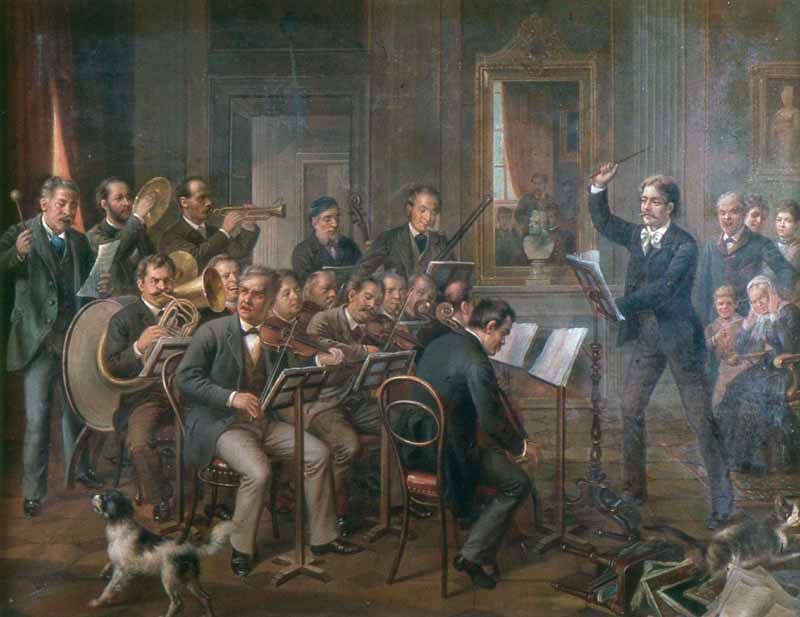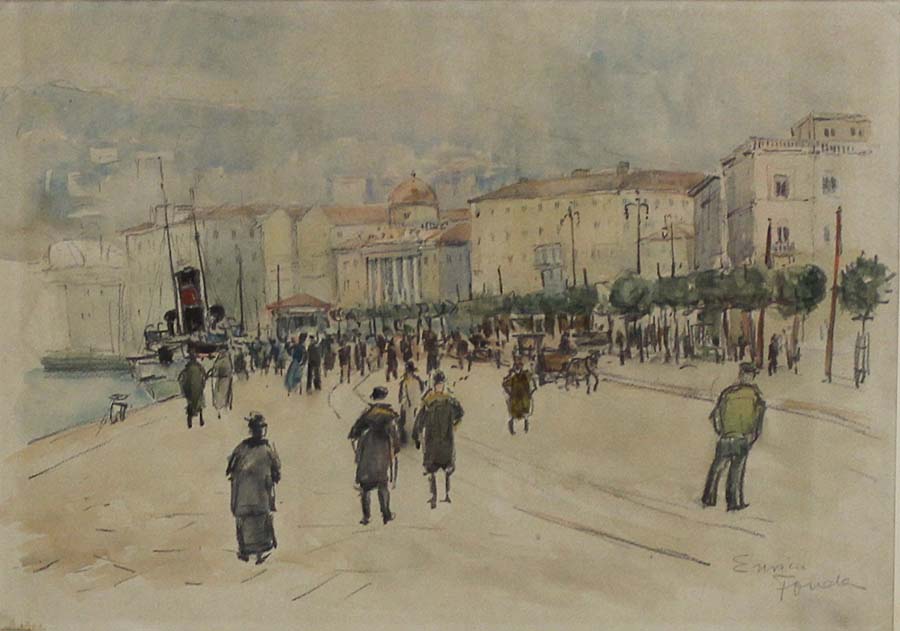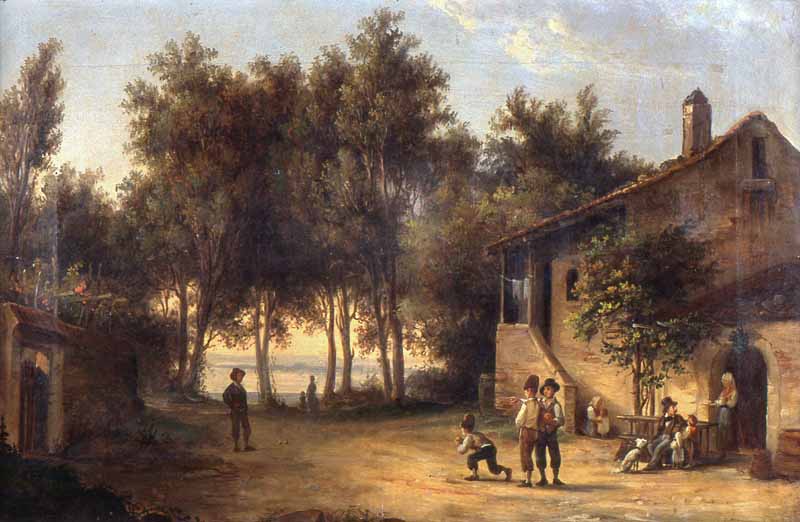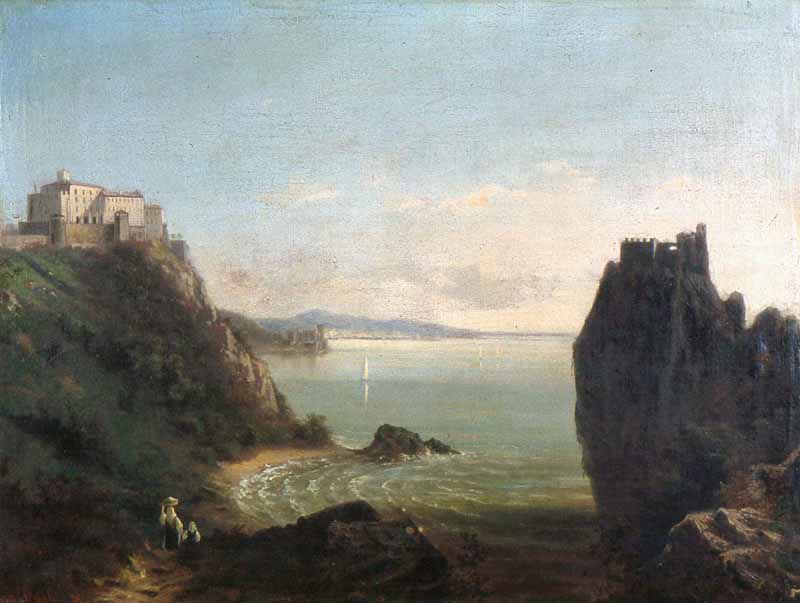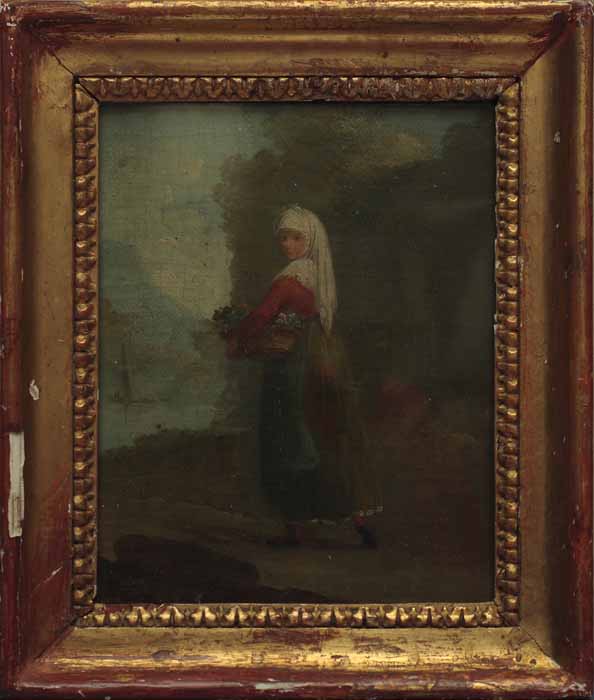Paintings by Triestine artists in the Fonda Savio Legacy at the Ateneo of Trieste.
The Fonda Savio Legacy includes a substantial collection of works that offers an interesting selection of paintings by Trieste-based artists, effectively contributing to the narrative of the local painting tradition.
Antonio Rosé, son of Giovanni Luigi Rosé (1806-1884), a well-known creator of a rich series of still lifes and an active member of the Triestine Artistic Circle, frequently exhibited in Trieste. An artwork in the collection depicts the two castles of Duino, Castel Vecchio and Castel Nuovo, built on two steep promontories overlooking the sea.
A genre scene portraying boys in herdsmen's attire playing bocce outside an inn is by Giuseppe Rieger, a specialist in lithographic translations, and demonstrates a versatile approach capable of tackling very different subjects and themes.
The portrait, dated 1936, depicts Antonio Fonda Savio, manager of the Veneziani company, in a grey suit with a thoughtful gaze directed elsewhere, giving the painting a solemn yet detached tone. This work belongs to the full maturity of Giannino Marchig, a well-regarded painter of Triestine origin.
The watercolor Le rive, likely created in the early 1920s, demonstrates Enrico Fonda's disenchanted approach to representing cityscapes.
A piece dedicated to Istrian folk costumes, widely seen in Trieste as well, is attributed to Giuseppe Bernardino Bison.
The painting I musicanti was created by Raffaele Astolfi, who studied at the Venice Academy but later moved to Trieste, where he lived for the rest of his life.
Many other works are part of this legacy, including a collection of drawings by Arturo Fittke, for which one is referred to the dedicated section.

